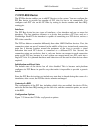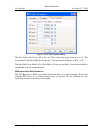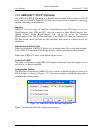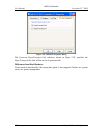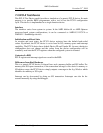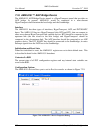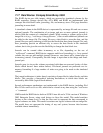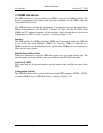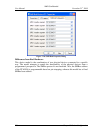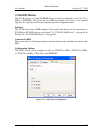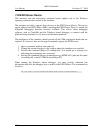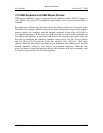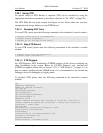
AMD Confidential
User Manual November 21
st
, 2008
104 Chapter 7: Device Configuration
7.17 Raid Device: Compaq SmartArray 5304
The RAID device uses disk images, which are accessed as simulated volumes by the
RAID controller. Storage devices like ATA HDD and RAID are implemented with
concepts like disk-block cache, journaling, file, and memory stores. This page describes
journaling in more detail.
A simulated volume in the RAID device is represented by an image file and one or more
optional journals. The combination of an image and zero or more optional journals is
used to hold the contents of a simulated volume. While creating a volume assign a disk-
image file to it (e.g., “raid.image 0 imagefilename”). One or more additional journals can
be added to the image file. The image file uses a data block to store the data, and the
journal files use sparse indexing to hold just the blocks that have been changed. Not only
does journaling provide an efficient way to access the data blocks in the simulated
volume, but it also gives the user the flexibility to change the data-block size.
Journals can be created either in-memory or as file, depending on the use of
“addjournal” command. RAID device supports multi-level journaling; i.e., for a created
volume, the user can add multiple journals (however, one cannot add a journal after an
in-memory journal). Conceptually, the disk image is equivalent to the image and fixed-
journal pair.
Journals grow in size as the volumes associated with them are accessed (writes of data-
blocks which haven‟t been written before). File-based journals are preferred over in-
memory Journaling if a large number of writes are going to be made to the simulated
volume.
The journal architecture is index-based, consisting of super blocks, index blocks, and data
blocks. This provides a hierarchical indexing mechanism, in which data blocks are
accessed by their LBA (logical block address).
Several performance mechanisms are implemented in the RAID device, including Disk
Block Cache and Last Sector Hit, which can be viewed at any time using the “raid.status
–v” command.
AMD tested the RAID device both on SUSE Linux-64 and a 32-bit version of Windows
2003 Enterprise Server, using stock drivers to drive this model. This model emulates
devices at the volume level, so that the files used to represent the data correspond to
logical volumes, not disks. This model associates one logical volume with one image file.
The model does not represent the timing of any real system, because data becomes
available almost immediately.



